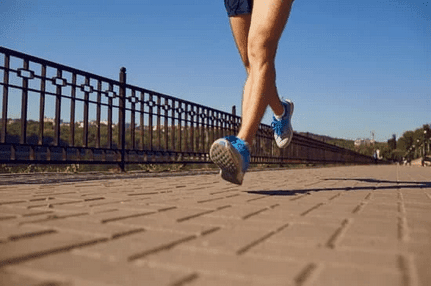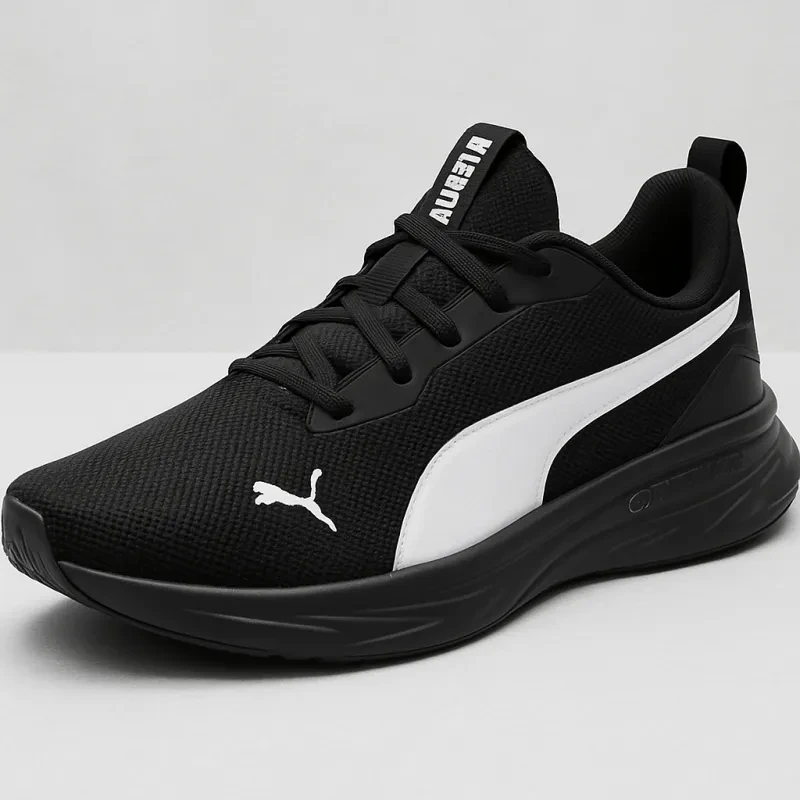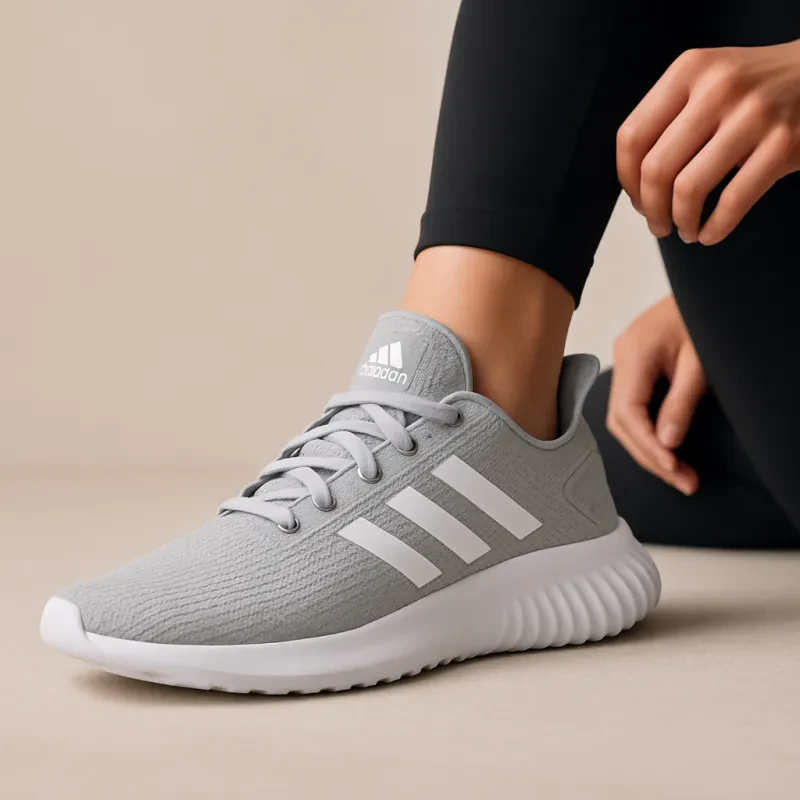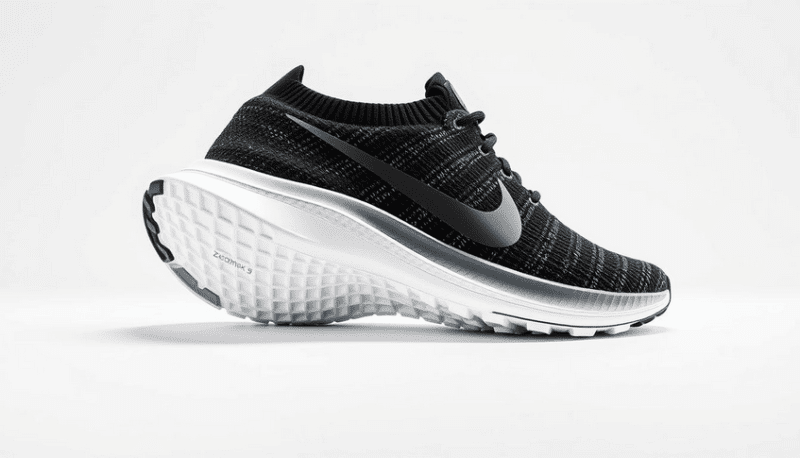"Pavement Perspectives: How Running Surfaces Shape Shoe Selection"
Navigating through the world of running shoes can feel a bit like wandering in a labyrinth, especially with such an extensive array to choose from. As someone who revels in the rhythm of my own footfalls, I've come to appreciate that when it comes to running shoes, one size indeed doesn't fit all - each unique terrain we conquer demands its own set of footwear features.
This blog aims to be your compass in making choices rooted not just in function but also in personal style and comfort. So buckle up for this adventure into the realm of surfaces and styles — together, let's make those miles more than mere numbers on our fitness trackers; let’s make them comfortable!

Key Takeaways
- The surface you run on can affect your risk of injury, running biomechanics, and impact loading. Different surfaces like concrete or grass require different shoe features for optimal performance and comfort.
- Choosing the right shoes involves considering factors such as individual running style, foot type and shape, and training goals. Understanding these factors will guide you in selecting shoes that provide support, stability, cushioning, and shock absorption based on your unique needs.
- Trying on and testing different shoes is crucial to finding the right fit for your feet. It allows you to determine if the shoes offer enough cushioning and support while ensuring comfort during walking or running activities.
- To minimize impact on any surface while running or walking: choose appropriate footwear for each surface (cushioning for hard surfaces; supportive sole for soft surfaces), focus on proper form and technique (land softly with a midfoot strike), gradually increase training volume/intensity to allow the body to adapt, consider cross-training or alternating surfaces to reduce repetitive stress injuries.
Understanding the Effects of Running Surfaces on Shoe Choice
Different running surfaces have a significant impact on our choice of shoes, as they can affect injury prevention, running biomechanics, and the management of impact loading.
Importance of surface choice in injury prevention
Picking where you run is key to avoid getting hurt. Every type of surface we run on, like sand, pavement, or treadmills, changes our stride and overall health. Think about it this way: Your legs bend a certain amount when they hit the ground.
This is called leg stiffness. If you change where you run, your leg stiffness changes too! That's why running on different surfaces affects things like plantar pressure in your shoes and tibial acceleration (how fast your shin bone moves).
So if you switch up your surface without thinking about it first can lead to injuries. Don't forget how important choosing the right shoes can be too! Heavily cushioned shoes raise the leg stiffness and handle impact better which stops injuries before they start.
How different surfaces impact running biomechanics
Different surfaces have a significant impact on running biomechanics, which refers to how our bodies move while running. When we run on hard surfaces like concrete, it can lead to higher tibial accelerations and increased plantar pressure.
This means that the forces exerted on our shins and feet are greater, which can increase the risk of injuries like shin splints and stress fractures. On the other hand, when we run on softer surfaces like grass or dirt trails, these forces are reduced because the surface absorbs some of the impact.
Softer surfaces also require more muscle activation for stability since they are less stable compared to harder ones. It's important for runners and walkers to be aware of these differences in order to choose the right shoes that provide adequate cushioning and support based on their preferred running surface.
The role of footwear construction in managing impact loading
Choosing the right footwear plays a crucial role in managing impact loading while running or walking. The construction of the shoes, especially features like cushioning and shock absorption, can help reduce the force that your feet and legs experience with each step.
Highly cushioned running shoes are designed to absorb some of the impact, helping to protect your joints and muscles from excessive stress. By selecting shoes with appropriate construction for your specific needs, you can minimize the risk of injuries related to impact loading during your activities.
Factors to Consider for Optimal Shoe Choice
When choosing the right shoes for running, there are several factors to consider. These include individual running style and technique, foot type and shape, as well as training goals and distances.
Individual running style and technique
Everyone has their own unique running style and technique. How you run, the way your feet hit the ground, and the motion of your arms can all affect how your body responds to different surfaces.
It's important to consider these factors when choosing the right shoe for you. Your running style and technique will influence things like foot strike, stride length, and stability.
By understanding your individual needs, you can find a shoe that supports and enhances your natural running mechanics. So take some time to analyze how you run and use this knowledge to select a shoe that complements your style and helps keep you comfortable and injury-free on any surface.
Foot type and shape
When it comes to choosing the right running shoes, considering your foot type and shape is important. Every person's foot is different, and understanding your own feet can help you find the perfect fit.
Some people have high arches, while others have flat feet. The shape of your foot also matters - some people have narrow feet, while others have wider ones. Knowing these details about your own feet will guide you in selecting shoes that provide proper support and stability.
This can help prevent injuries and ensure a comfortable running experience.
It's worth noting that certain types of running shoes are designed specifically for different foot types and shapes. For example, if you have high arches, you may benefit from shoes with extra cushioning to absorb shock.
On the other hand, if you have flat feet or overpronation (when your foot rolls inward excessively), a shoe with more support on the inside may be recommended.
To determine your foot type and shape accurately, visiting a specialized running store where they can analyze how you walk or run may be helpful. They can assess whether you need neutral shoes (for normal pronation) or stability/control shoes (for overpronation).
Training goals and distances
When determining the right shoes for different running surfaces, it's important to consider your training goals and distances. Your shoes should be suitable for the type of running you plan to do and the distances you aim to cover.
For example, if you're training for a marathon or longer distance races, you may need more cushioning and support in your shoes to help reduce the impact on your joints over long periods of time.
On the other hand, if your goal is speed or short sprints, lightweight and responsive shoes may be more appropriate. Understanding your training goals and distances will help guide you in choosing the right shoes that can enhance performance and minimize the risk of injuries.
Impact Forces on Common Running Surfaces
Several studies have analyzed the impact forces on different running surfaces, providing valuable insights into optimal shoe choices for each surface. To learn more about the results and recommendations for choosing the right shoes, read on.
Results from multiple studies
Multiple studies have looked into the impact of different running surfaces on shoe choice. These studies have found that the choice of surface can affect factors such as tibial accelerations, velocity, and muscle tuning.
For example, running on concrete surfaces may result in higher impact forces compared to synthetic tracks. The findings also suggest that different shoes perform differently on various surfaces.
Highly cushioned shoes can help manage impact loading and reduce the risk of injuries. It's important to consider these results when choosing the right shoes for your running surface to ensure optimal performance and minimize the risk of injuries.
Comparison of peak forces on various surfaces
Different running surfaces can have varying impacts on peak forces experienced during running. Studies have shown that concrete surfaces result in higher peak forces than softer surfaces like grass or dirt.
Synthetic tracks generally fall somewhere in between. Peak forces are important because they can affect the risk of injury and overall comfort while running. When choosing the right shoes for different surfaces, it's crucial to consider how your body interacts with each surface and find a balance between cushioning and stability to minimize impact forces and potential injuries.
Remember that highly cushioned shoes may help manage impact loading on harder surfaces, while lighter minimalist shoes might be more suitable for softer terrains like trails or grassy fields.
Recommendations for Choosing the Right Shoes for Different Surfaces
Consider trying on and testing different shoes to find the right fit for your foot type and running style. Learn how different surfaces impact running biomechanics and choose footwear that helps minimize impact on any surface.
Discover tips to optimize your shoe choice for hard, soft, flat, or uneven surfaces.
Importance of trying on and testing shoes
Trying on and testing shoes is crucial when it comes to choosing the right footwear for running or walking. By trying on different pairs, you can see how they fit your feet and determine if they provide enough support and cushioning.
It's important to test them by walking or running in them to ensure they feel comfortable and that there are no areas of discomfort or rubbing. Trying on and testing shoes allows you to find the pair that suits your foot type, running style, and training goals the best.
Don't skip this step as it can help prevent potential injuries and ensure a better overall experience while being active.
Considerations for different surfaces (hard vs. soft, flat vs. uneven)
When choosing the right shoes for different surfaces, we must consider whether the surface is hard or soft, flat or uneven. For hard surfaces like concrete or pavement, it's important to have shoes with good cushioning to absorb impact and prevent injuries.
Shoes with a more supportive sole can help provide stability on soft surfaces like grass or sand. If you're running on flat surfaces like a synthetic track, choose lightweight and flexible shoes for better speed and efficiency.
If you're tackling uneven terrain like trails, opt for shoes with durable outsoles and good traction to maintain grip and prevent slips.
Tips for minimizing impact on any surface
To minimize impact on any surface while running or walking, there are a few tips that can help. First, it's important to choose the right shoes for the surface you'll be running on.
Consider the terrain and select shoes that provide appropriate cushioning and support. Trying on and testing different pairs of shoes can help find the best fit.
Next, pay attention to your running technique. Proper form and technique can help distribute impact forces more evenly throughout your body, reducing stress on specific areas like joints and muscles.
Focus on landing softly with each step, using a midfoot strike instead of heel striking.
In addition, gradually increase your training volume and intensity. Sudden changes in workload can put added stress on your body and increase the risk of injuries. By progressing slowly and allowing your body to adapt, you can minimize the impact from excessive strain.
Conclusion
In conclusion, the choice of running surface is important in preventing injuries and optimizing performance. Different surfaces impact running biomechanics and the right shoe can help manage impact loading.
Factors like individual running style, foot type, and training goals should be considered when choosing shoes for different surfaces. By understanding the impact of running surfaces on shoe choice, runners can make informed decisions to improve their overall running experience.
FAQs
1. What does "Understanding the Impact of Running Surfaces on Shoe Choice" mean?
"Understanding the Impact of Running Surfaces on Shoe Choice" means learning how different running surfaces affect your shoe selection for running.
2. How does choosing the right shoe help while running?
The right shoes can lessen tibial accelerations during running, improve your running economy, and protect your Achilles tendon.
3. Can different running surfaces impact my shoes?
Yes, different surfaces can affect shoe performance and durability and can even influence factors affecting shoe choice based on those surfaces.
4. What is the role of footwear construction in influencing my run?
Footwear construction plays a key role in muscle tuning during runs and affects leg stiffness especially when using cushioned shoes.
5. Does my preferred style of footwear matter when considering what surface I'm going to run on?
Absolutely! Shoes like minimalist ones have effects on your running economy; selecting according to whether you prefer them or not may greatly influence how you perceive the impact.
Recent Related Articles:
The Evolution of Running Shoes: From Track to Trail
Pickleball Drills for Skill Development: Boosting Your Performance
DISCLAIMER
This document is provided for general information purposes only. It should not be relied upon as providing legal advice, technical, or specific operational guidance to the reader, whether as to the practices described in the document or the applicable legal requirements and regulations. SAVE ON SNEAKS expressly disclaims any responsibility for liability arising from or related to the use or misuse of any information in this document.
The advice given on this website does not constitute or replace medical advice. Please consult with a doctor before starting any exercise or nutrition plan. Always Remember to Run Safe!



